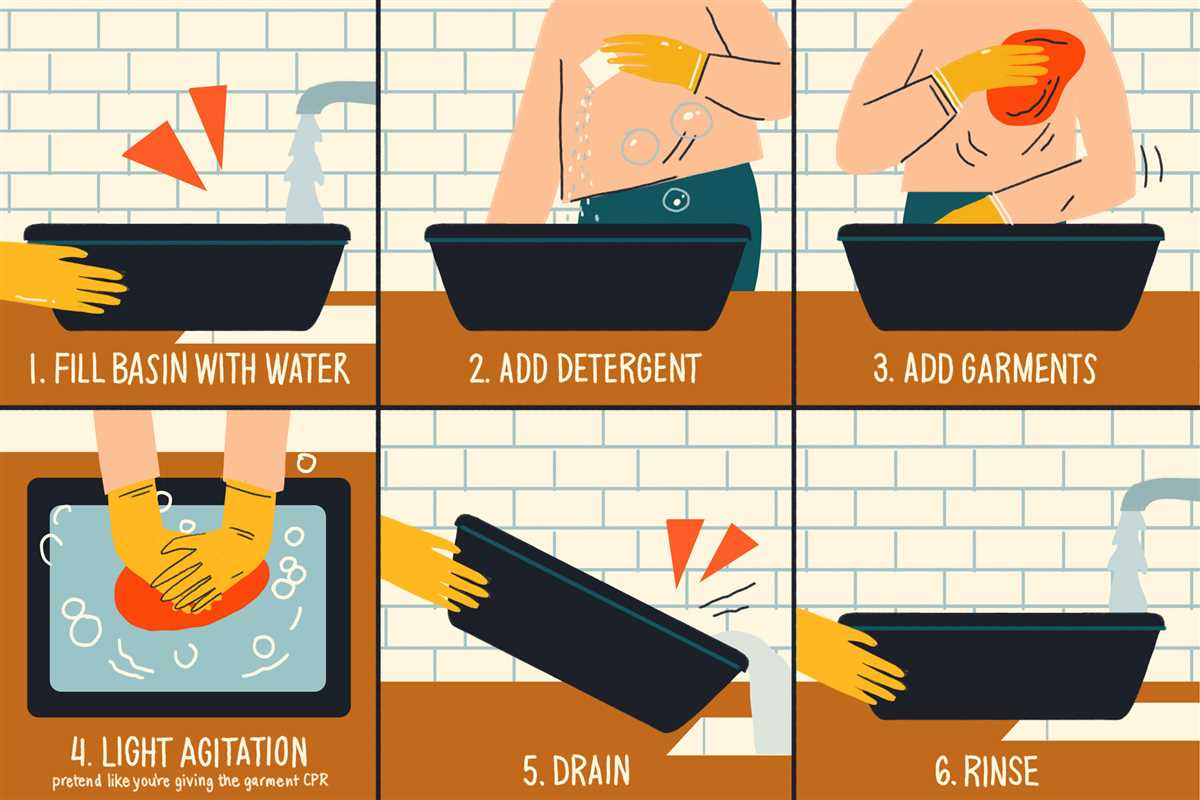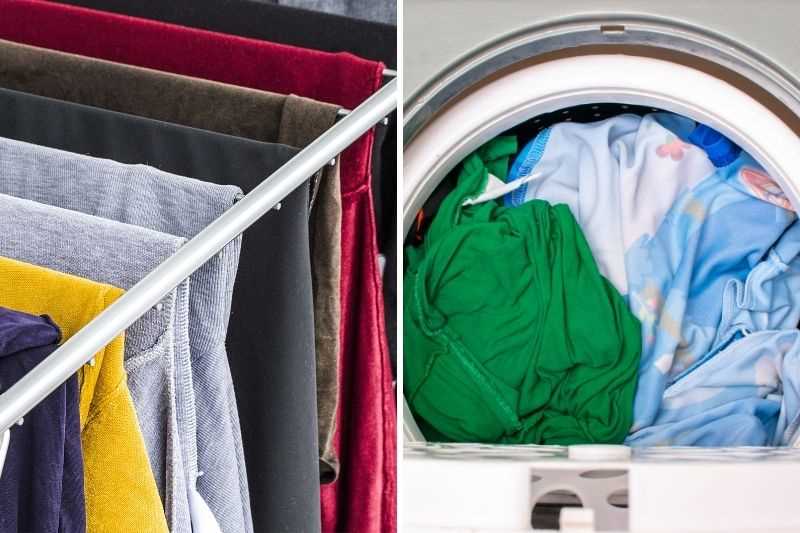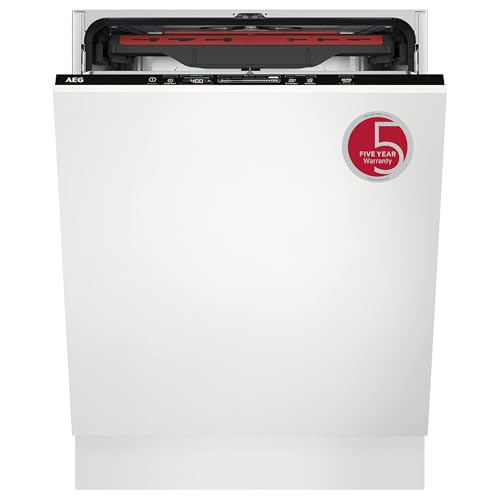




When it comes to doing laundry, there are always questions about the best practices. One common question is whether or not to turn your clothes inside out when washing them. Some people swear by this practice, while others are unsure if it makes a difference. We spoke to experts in the field to get their advice on whether or not you should turn your clothes inside out when washing them.
According to experts, turning your clothes inside out can actually help them last longer. When you turn your clothes inside out, you protect the outer layer of the fabric from harsh detergents and any friction that may occur during the washing process. This can help prevent fading, pilling, and other forms of damage to the fabric.
However, not all garments need to be turned inside out. According to the experts, clothes that have delicate embellishments, like sequins or beading, should be washed right side out to prevent any damage. Similarly, clothes made of delicate fabrics, like silk or lace, should also be washed right side out to avoid snags and tears.
“Turning your clothes inside out is especially important for items that have a lot of stretch,” says laundry expert Jane Smith. “The friction from the washing machine can cause the fabric to lose its shape over time, but turning them inside out can help minimize this.”
So, while turning your clothes inside out may not be necessary for every item in your laundry pile, it is certainly a good practice for many garments. It can help extend the life of your clothes and keep them looking their best. Consider giving it a try the next time you do your laundry!
The Importance of Turning Clothes Inside Out
When it comes to doing laundry, a simple step that can make a big difference in preserving the quality and appearance of your clothes is turning them inside out before washing. This small action can protect your garments from various issues and help them last longer.
1. Preventing Color Fading
By turning your clothes inside out before washing, you can minimize color fading. Many fabrics, especially those dyed with vibrant or dark colors, are prone to fading when exposed to friction and agitation during the washing process. Turning them inside out can help protect the outer layer of the fabric and maintain the colors for a longer time.
2. Preserving Prints and Embellishments
Clothes often feature prints, embroidery, or other embellishments. These decorative elements are more delicate and prone to damage during washing. When turned inside out, they are better protected from rubbing against other items in the machine or getting tangled with zippers or buttons.
3. Preventing Snagging and Pilling
Turning clothes inside out can also help prevent snags and pilling. The inner side of a garment is often less exposed to friction and rubbing against other fabrics or surfaces. By keeping this side on the outside during washing, you reduce the chances of snags and the formation of unattractive pills.
4. Maintaining the Shape
Some fabrics and garment types are more susceptible to stretching or losing their shape when exposed to the rigors of washing. By turning your clothes inside out, you can mitigate this issue and help to maintain the original shape of your garments.
5. Increasing Longevity
Overall, turning clothes inside out can prolong their lifespan. By minimizing color fading, preserving prints and embellishments, preventing snags and pilling, and maintaining the shape, your clothes will remain in a better condition for a longer time. This helps you save money in the long run by reducing the frequency of replacing worn-out garments.
Remember to check the care labels on your clothes for specific instructions. While turning clothes inside out is generally beneficial for most garments, there may be exceptions for certain delicate fabrics or specific washing instructions provided by the manufacturer.
Protecting Colors and Prints

- Washing your clothes inside out can help protect the colors and prints on the fabric from fading.
- When clothes rub against each other in the washing machine, friction can cause the colors to fade and prints to wear off. Turning your clothes inside out minimizes this contact and helps to preserve their original appearance.
- This is particularly important for clothing items with delicate or vibrant colors and intricate prints.
Here are a few tips to keep in mind:
- Separate your dark and light-colored clothes to prevent color bleeding.
- Consider using a gentle detergent specifically formulated to protect colors.
- Use cold water instead of hot or warm water, as heat can accelerate color fading.
- Avoid using chlorine bleach, as it can strip the color from your clothes.
If you’re unsure about a specific item, always check the care instructions on the garment’s label for any additional cleaning recommendations.
Minimizing Wear and Tear
When it comes to taking care of your clothes, minimizing wear and tear is essential in order to preserve the lifespan of your garments. Here are some tips to help minimize damage:
1. Turn clothes inside out
By turning your clothes inside out before washing, you can help protect the outer surface, preventing fading, pilling, and other forms of wear and tear. This is particularly important for garments with delicate fabrics or prints.
2. Use gentle cycles
Washing your clothes on gentle cycles can help reduce the stress and friction they experience during the washing process. This can help minimize the risk of stretching, tearing, or other forms of damage.
3. Sort clothes by color and fabric type

Separating your clothes by color and fabric type can help prevent color bleeding and damage caused by different fabrics rubbing against each other. This is especially important for vibrant or dark-colored garments that may bleed onto lighter garments.
4. Avoid overcrowding the machine

Overcrowding the washing machine can lead to excessive friction and tangling, which can cause clothing fibers to weaken or unravel. Be sure to give your garments enough space to move and agitate freely during the washing process.
5. Use mild detergent
Using a mild detergent can help protect your clothes from harsh chemicals that may weaken the fabric or cause color fading. Look for detergents specifically formulated for delicate or sensitive fabrics.
6. Hang dry or use low heat

Avoid using high heat when drying your clothes, as it can cause shrinkage, color fading, and excessive wear. Whenever possible, opt for air drying by hanging your clothes or using low heat settings on your dryer.
7. Store clothes properly
Proper storage is crucial for minimizing wear and tear when your clothes are not in use. Fold or hang your clothes in a well-ventilated area away from direct sunlight to avoid color fading and damage caused by moisture or pests.
By following these tips, you can help prolong the life of your clothes and keep them looking their best for longer.
Preventing Pills and Fuzz

Pills and fuzz are small, annoying balls of fabric that can form on the surface of your clothes, making them look worn out and old. Fortunately, there are several steps you can take to prevent or minimize the occurrence of pills and fuzz.
1. Sort your laundry
Before washing your clothes, be sure to sort them based on fabric type and color. Sort delicate fabrics such as silk, cashmere, and wool separately from sturdier fabrics like cotton or denim. This will prevent friction between different types of fabrics, which can lead to pilling.
2. Turn your clothes inside out

One effective way to prevent pills and fuzz is to turn your clothes inside out before washing. This helps minimize friction between the clothing surface and the agitator or other clothes in the machine. Simply flip your garments inside out and fasten any zippers or buttons.
3. Use a gentle cycle
When using a washing machine, opt for a gentle or delicate cycle. This reduces the amount of agitation, which in turn reduces the likelihood of pilling. Avoid using the regular or heavy-duty cycles for delicate fabrics, as they can be too harsh.
4. Wash in cold water

Hot water can weaken the fibers in your clothes and make them more prone to pilling. Washing in cold water helps preserve the fabric’s integrity and reduces the risk of pilling or fuzz. Additionally, cold water is more energy-efficient and can save you money on your energy bills.
5. Use a gentle detergent
Choosing a gentle detergent specifically designed for delicate fabrics can help prevent pilling. Avoid using harsh or abrasive detergents that may weaken the fabric and contribute to fuzz formation. Look for detergents labeled “gentle” or “delicate” and follow the recommended dosage.
6. Avoid overloading the washing machine
Overloading the washing machine can cause excessive friction between the clothes, leading to pilling. Make sure to leave enough space for the clothes to move freely during the wash cycle. If necessary, divide your laundry into smaller loads to ensure proper agitation and prevent pilling.
7. Air dry or use a low-heat setting
High heat can damage the fibers in your clothes and increase the likelihood of pilling. Instead of using a high heat setting in the dryer, opt for air drying or use a low-heat setting. This will help preserve the fabric and prevent fuzz formation.
By following these preventive steps, you can keep your clothes looking fresh and free from pills and fuzz. Taking a little extra care during the washing process can go a long way in maintaining the quality and longevity of your garments.
Expert Tips for Turning Clothes Inside Out
When it comes to washing your clothes, turning them inside out can be a helpful technique. Here are some expert tips to keep in mind:
1. Protect delicate fabrics
If you have clothes made from delicate fabrics such as lace, silk, or satin, turning them inside out can help protect the delicate surface from any friction or rubbing that may occur during the washing process. This can help prevent snags, pulls, or damage to the fabric.
2. Preserve colors
Turning clothes inside out can also help preserve the color and vibrancy of your garments. The agitation that occurs during the washing cycle can cause the color to fade or bleed. By turning your clothes inside out, you can minimize the contact between the detergent and the outer surface, helping to maintain the original color of your clothes.
3. Enhance cleaning

By turning your clothes inside out, you allow the detergent and water to directly contact the soiled areas of the fabric. This can lead to a more thorough cleaning as the detergent can penetrate and target stains or dirt that may be on the fabric’s surface. So, turning your clothes inside out can help ensure a more effective wash.
4. Minimize pilling
Pilling, or the formation of small fabric balls, can be a common issue with certain types of clothing, particularly knitwear. Turning your clothes inside out can help minimize pilling by reducing the friction that occurs between the fabric and other items in the wash, such as zippers or buttons. This can help extend the lifespan of your garments.
5. Consider garment-specific instructions
While turning clothes inside out is generally a beneficial technique, it’s important to consider any garment-specific instructions. Some clothes, such as those with embellishments or prints, may require special care. Always check the care label and follow any specific instructions provided by the manufacturer.
In conclusion, turning clothes inside out can help protect delicate fabrics, preserve colors, enhance cleaning, minimize pilling, and extend the lifespan of your garments. Consider implementing this technique into your laundry routine and enjoy the benefits it brings to your clothes.
FAQ
Why do some people suggest turning clothes inside out when washing?
Some people suggest turning clothes inside out when washing to help protect the outer surface of the fabric from getting damaged or faded by the friction and agitation of the washing machine.
Will turning clothes inside out prevent fading?
While turning clothes inside out may help reduce fading to some extent, it is not a foolproof method. The main causes of fading are usually the detergent, temperature, and the quality of the fabric itself.
Does turning clothes inside out affect the cleanliness of the clothes?
No, turning clothes inside out does not affect the cleanliness of the clothes. The detergent and water will still reach all parts of the fabric, ensuring that the clothes are properly cleaned.
Is turning clothes inside out necessary for all types of clothing?
No, it is not necessary for all types of clothing. Turning clothes inside out is generally recommended for delicate or dark-colored items that are more prone to damage or fading. However, for most everyday clothing, it is not necessary.












